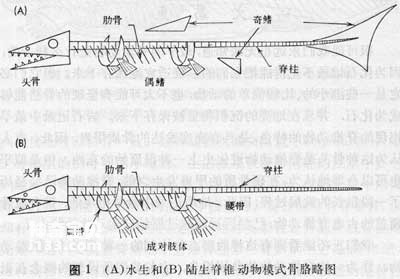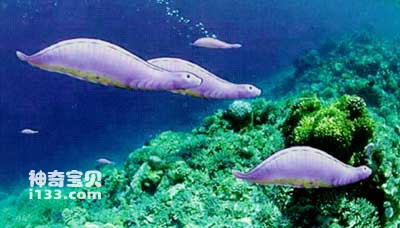Vertebrates are the highest group in the animal kingdom. They form a subphylum of the phylum Chordata in the animal kingdom - the subphylum Vertebrates.

Vertebrate skeleton pattern diagram
There is a spine in the body of vertebrates, which is connected by a series of vertebrae, which is what we usually call the backbone. It plays a role in supporting the body; there is a developed skull in front of the spine, which, together with the spine, extends from both sides of the spine. The protruding ribs and the odd fins associated with the vertebrae in fish-shaped vertebrates constitute the axial skeleton of vertebrates. Most vertebrates also have a set of appendage skeletons, consisting of pairs of fins (found on the bodies of fish-shaped vertebrates) or limbs (found on the bodies of tetrapod vertebrates), which serve to balance and propel the body forward. and the role of taking direction while moving forward. The appendicular skeleton is connected to the axial skeleton of the body through bony limb girdle. The pair of limb girdle in the front is called the shoulder girdle, and the pair in the rear is called the girdle.

Haikou worm
At the end of the 20th century, several primitive vertebrates from 520 million years ago were discovered in the Haikou area of Kunming, Yunnan, my country: Kunming fish, Haikou fish and Haikou worm. They show that the history of vertebrates begins at least as early as the early Cambrian. In particular, the anatomical characteristics of Haikou worm are strikingly similar to the primitive chordate amphioxus that still survives in modern times. On the other hand, it shows obvious vertebrate characteristics, such as a brain located at the front of the body, a primitive vertebrae, and a body. Lateral eyes, cartilaginous gill arches, mineralized throat teeth, etc. The cartilaginous branchial arches and mineralized pharyngeal teeth are both derivatives of the neural ridge, and their existence proves that Haostoma is already at a key position in the evolution toward vertebrates near the divergence point between cephalochordates and vertebrates.
Modern vertebrates undoubtedly have spines and heads, but in the primitive stage when vertebrates just appeared, perhaps such distinctive features were not finally completed. So what are the key characteristics of the most primitive vertebrates? Recent research has discovered that vertebrates have a tissue called the neural ridge that is not found in invertebrates during early embryonic development. This tissue is directly or indirectly involved in the development of a large number of tissues and organs unique to vertebrates. Therefore, the neural ridge is likely to be the key feature that distinguishes vertebrates from invertebrate chordates, and its emergence is the main reason why vertebrates have become one of the most evolutionarily successful groups of animals.
Haikou Worm was discovered by Chinese paleontologist researcher Chen Junyuan, with more than 300 specimens. These primitive fish-shaped vertebrate fossil specimens, which are only 3 centimeters in size, preserve eyes, gonads, heart, blood vessels, notochord, intestines, gonads, nerve cord and a brain divided into three parts with an enlarged front end of the nerve cord. Such intact fossils provide scientists with a large amount of scientific information to uncover the secrets of this primitive vertebrate that lived 520 million years ago and its ecological environment.
animal tags: vertebrates
We created this article in conjunction with AI technology, then made sure it was fact-checked and edited by a Animals Top editor.